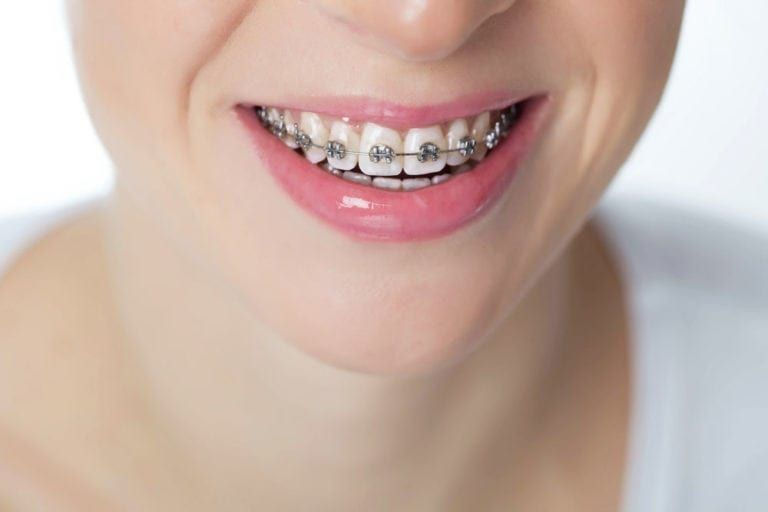Orthodontic Emergencies: How to Handle Them and When to See Your Orthodontist
- dclinicdubai
- Dec 17, 2024
- 4 min read
Orthodontic emergencies can occur unexpectedly, leaving you unsure about what to do next. Whether you’re dealing with a broken bracket, a loose wire, or discomfort from your braces, knowing how to manage these situations can help minimize potential damage and keep your treatment on track. If you're in Dubai and experiencing an orthodontic emergency, understanding how to respond and when to contact your orthodontist in dubai is key to maintaining the progress of your smile transformation.

Understanding Common Orthodontic Emergencies:
While most orthodontic treatments, such as braces or clear aligners, are generally smooth sailing, emergencies can arise. It's important to identify what qualifies as an emergency and what can be handled at home with a bit of care.
Common Types of Orthodontic Emergencies:
Loose or Broken Brackets: Brackets are the small pieces that attach to your teeth and hold the wires in place. If one becomes loose or breaks, it can disrupt your treatment.
Poking Wires: Wires may sometimes become displaced, causing them to poke into your gums, cheeks, or lips.
Loose Bands: Bands, which are metal rings placed around your back teeth, can sometimes become loose or fall off completely.
Discomfort or Pain: Some discomfort is common, especially after adjustments, but severe pain or swelling may indicate an issue.
Lost or Broken Retainers: If you’re in the post-braces phase, losing or damaging your retainer can affect the alignment of your teeth.
What to Do for Minor Orthodontic Issues:
1. Dealing with Loose Brackets:
A loose bracket can be irritating, but it’s important not to panic. Here’s how to handle it:
Try to Reattach It: If the bracket is still attached to the wire but loose, use orthodontic wax to keep it in place temporarily. Place a small piece of wax over the bracket to prevent it from rubbing against your gums.
Remove the Bracket: If the bracket has completely detached, use clean tweezers to remove it. Store it safely and contact your orthodontist for a replacement.
2. Poking Wires:
A displaced wire can cause significant discomfort by poking into the soft tissue inside your mouth. Here’s what to do:
Use Wax: Cover the end of the wire with orthodontic wax to create a smooth surface and alleviate discomfort.
Trim the Wire: If the wire is excessively long and causing pain, you can use clean scissors or nail clippers to trim the wire carefully. Be cautious to avoid cutting the wire too short.
Contact Your Orthodontist: If the wire is still causing discomfort after you’ve applied wax or trimmed it, make sure to contact your orthodontist for further advice.
3. Loose Bands:
Bands are placed around the molars and can sometimes become loose or completely detach. Here’s how to manage this:
Don’t Panic: If the band has become loose but isn’t causing discomfort, try to leave it alone until you can see your orthodontist.
Contact Your Orthodontist: If the band has completely come off, make an appointment with your orthodontist as soon as possible. They may need to replace the band to avoid delaying your treatment.
4. Retainer Issues:
If you’ve completed your braces treatment and are wearing a retainer, losing or damaging it can affect the alignment of your teeth. Here's what to do:
Contact Your Orthodontist Immediately: If your retainer is broken or lost, reach out to your orthodontist to get a replacement as soon as possible.
Do Not Skip Wearing It: If you lose your retainer, continue to wear your old retainer (if still fitting) or other available alternatives to keep your teeth in place until you get a new one.
When to Seek Professional Help:
While many orthodontic emergencies can be handled at home, some situations require professional attention from your orthodontist. Here are the signs that indicate it’s time to call for help:
1. Severe Pain or Swelling:
Pain Beyond Normal Discomfort: Mild discomfort is common after an adjustment or a tightening of braces, but if you experience intense or prolonged pain, it could indicate a more serious issue, like an infection or injury. Seek help immediately.
2. Lost or Broken Braces:
Multiple Broken Brackets or Wires: If you’ve lost multiple brackets or wires are consistently coming loose, it’s essential to see your orthodontist. Continuing with broken braces can delay treatment and affect the final results.
3. Difficulty Eating or Speaking:
If you’re unable to eat or speak comfortably due to issues with your braces or aligners, it’s time to contact your orthodontist. Your treatment may need to be adjusted.
4. Discomfort with New Braces or Adjustments:
If your braces or aligners are causing consistent and severe discomfort, don’t hesitate to call your orthodontist for a follow-up appointment. They can assess whether any adjustments are needed.
Tips for Preventing Orthodontic Emergencies:
While some issues are inevitable, there are steps you can take to prevent common orthodontic emergencies from occurring.
1. Maintain Regular Checkups:
Stay on top of your appointments to ensure that your braces are functioning correctly and any potential issues are caught early.
2. Follow Your Orthodontist’s Instructions:
Avoid eating hard, sticky, or chewy foods that can damage your braces. Adhering to these instructions can reduce the risk of problems arising.
3. Practice Good Oral Hygiene:
Brush and floss regularly to keep your braces clean and free of food particles. This will help prevent issues such as inflammation or infection around the braces.
4. Use Orthodontic Wax:
Always carry a small packet of orthodontic wax with you. It can help prevent irritation if you experience discomfort from your braces or wires.
Conclusion:
Orthodontic emergencies can be unsettling, but with the right knowledge and preparation, you can handle most situations with ease. It’s essential to act quickly and appropriately to avoid disrupting your orthodontic treatment. If you’re in Dubai and experience any problems with your braces or clear aligners, don’t hesitate to contact your orthodontist for guidance. Keeping your treatment on track will ensure that your path to a beautiful, healthy smile remains smooth and successful.
Readmore about: The Complete Guide to Choosing the Right Orthodontist


Comments